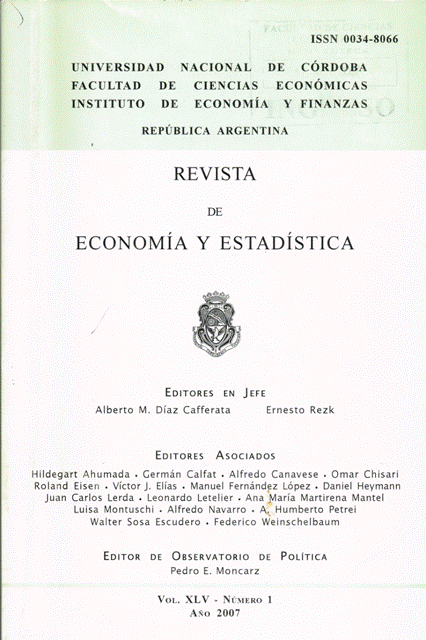Regional employment and wages. The effects of transport costs and market potential. An application for Argentina
DOI:
https://doi.org/10.55444/2451.7321.2007.v45.n1.4384Keywords:
economic geography , market potential , spatial agglomeration, increasing returns, transport costsAbstract
Economic activity in Argentina shows a high degree of concentration, in 1993 almost 46% of GDP was generated in an area representing just 0.14% of the country. When looking at the manufacturing sector the concentration is still higher. The new economic geography models developed since the early nineties explain the location of economic activity across regions as the result of two opposite forces, centripetal and centrifugal. As trade costs are reduced, the relative strength of these two forces changes, such that we might also expect changes in the regional structure of production and wages. How trade liberalising policies might have affected the structure of production and wages across regions is the topic we try to make a contribution. The evidence points out that the further reduction of trade barriers during the nineties might have had a small effect on the regional structure of employment and wages across counties, at least in the short-run.
Downloads
Downloads
Published
Issue
Section
License
Copyright (c) 2007 Pedro E. Moncarz

This work is licensed under a Creative Commons Attribution-NonCommercial-NoDerivatives 4.0 International License.
Authors who have publications with this journal agree to the following terms:
Authors retain their copyright and grant the journal the right of first publication of their work, which is simultaneously subject to the Creative Commons Attribution-NonCommercial-NoDerivatives 4.0 International License that allows third parties to share the work provided that its author and first publication in this journal are indicated.
Authors may adopt other non-exclusive licensing arrangements for distribution of the published version of the work (e.g. depositing it in an institutional telematic archive or publishing it in a monographic volume) as long as the initial publication in this journal is indicated.
Authors are allowed and encouraged to disseminate their work via the Internet (e.g. in institutional telematic archives or on their website) before and during the submission process, which can lead to interesting exchanges and increase citations of the published work. (See The Open Access Effect)














